The history of computer storage is an exciting topic that shows some of the most significant innovations that have shaped our current life. Steady at first, the development process became more and more rapid in the recent decades. This project aims to follow the development of storage technology by explaining the various stages of technological innovation. Thus, the scope of the project includes the history of crucial inventions for data storage, from the first punch cards to the latest flash memory storage technology.
Punch Cards
Punch cards were originally invented by Herman Hollerith and adopted for wide use in 1890 (Jones, 2008, para. 1). However, similar ideas could be seen in France in early 19th century, where they were used to control Jacquard looms (Jones, 2008, para. 2). Jacquard’s punch cards have also inspired Charles Babbage, whose ideas later prevented Hollerith’s company IBM from getting patent rights over the punch card data storage technology (Jones, 2008, para. 4).
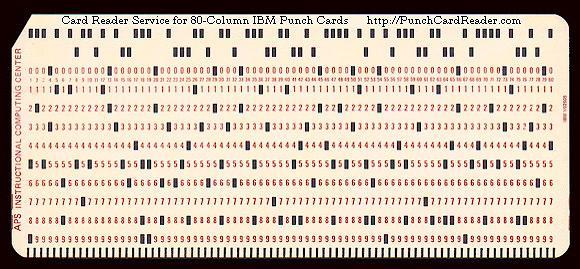
The technology behind punch cards was quite simple, which is probably why the idea became popular among many people. As Jones (2008) explains, “The original code used for punched card data recording in the 1890 census had 22 columns with 8 punch positions each” (para. 7). The holes punched in the card were used as a code to be read by a machine. The structure of the cards was later improved and expanded to accommodate more data that could be recorded on punch cards (Jones, 2008, para. 8). The original process of card reading did not require computers: until 1950’s, a semi-manual process involving both a card sorter and a tabulating machine was used (Jones, 2008, para. 16).
Magnetic Tape
The next step of storage technology development was the introduction of magnetic tape storage by Fritz Pfleumer in 1928 (“The history of (computer) storage”, n.d., sec. 10). When the concept was popularized, BASF became the company responsible for magnetic tape production, whereas AEG started manufacturing the Magnetophon machine, which was first used on November 19th 1936 to record the performance of the London Philharmonic Orchestra (“The history of (computer) storage”, n.d., sec. 10).
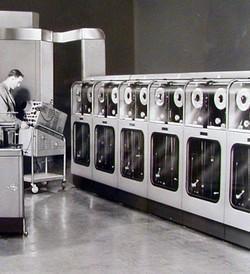
The magnetic tape included a long rolled string of film with an iron oxide coating, which recorded the data when exposed to a magnetic field. To recover the data, it was necessary to expose it to another electromagnetic field to reproduce the signal sequence recorded. From the 1950s, IBM computers began using a similar technology, which set the industry standard for magnetic tape to be “half an inch wide and wound on removable reels 10.5 inches in diameter” (“The history of (computer) storage”, n.d., sec. 10).
Hard Drives
The world’s first hard disk technology was introduced by RAMAC in 1956, starting the era of magnetic disk storage (Computer History Museum, 2016, sec. 7). Unlike the previous methods of storage, hard disk allowed accessing large amounts of data quickly. The first computer with a hard disk technology was the IBM’s 305 computer with IBM 305 Disk File, which had “fifty 24-inch platters with a total capacity of five million characters” (“The history of (computer) storage”, n.d., sec. 16).
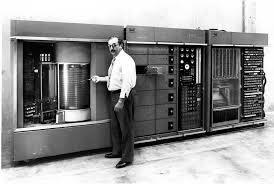
Hard disk consists of a central axis, the platters that spin around it at a certain pace, and the read-write heads, one on each platter (“The history of (computer) storage”, n.d., sec. 16). The functioning of the disk is granted by the use of rotating patterns to write and replay the information from a flat magnetic surface: “Information is written to the disk by transmitting an electromagnetic flux through an antenna or write head that is very close to a magnetic material, which in turn changes its polarization due to the flux” (“The history of (computer) storage”, n.d., sec. 16). The reverse process is required to retrieve the information. The initial storage capacity of the IBM 305 hard disk was 5 megabytes, which was a lot more than could be written to a magnetic tape. However, due to the large size of the hard disk, it was impossible to use it as a portable storage device, which later led to the introduction of floppy disks and optical disks.
Floppy Drives
In 1967, IBM invented the first 8-inch floppy drive with an intent to create “a simple and inexpensive system for loading microcode into their System/370 mainframes” (“The history of (computer) storage”, n.d., sec. 21), which would be faster, cheaper, and universal in purpose. 8-inch model was followed by a smaller 5.25-inch drive to be used in desktop computers and then by 3.5-inch floppy with increased speed and efficiency.
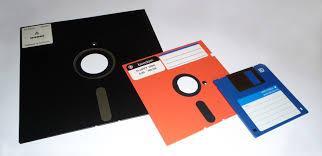
Floppy disks used magnetic technology to read and record data. The first disks had a circular hole in the middle of the diskette, which allowed for the rotation of a magnetic mechanism inside the computer.
Optical Drives
One of the most recent inventions in the field of computer storage, the optical drive was first introduced in the form of a compact disc (CDs) in late 20th century (“Optical disc”, 2015, sec. 1). The first person to think of using light for recording and replaying data was James T. Russel, who is now considered to be the inventor of the original concept of an optical disc (“The history of (computer) storage”, n.d., sec. 23). The first audio CD, however, was presented by Philips and Sony in 1983 (“Optical disc”, 2015, sec. 2).
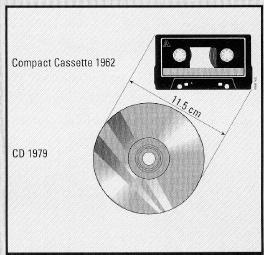
The technology used in optical storage includes the writing of bumps onto the disc surface in a single spiral, where the density of bumps on the surface determines the amount of data (“Optical disc”, 2015, sec. 3). Reading of the data is achieved by directing a laser diode on the reflective coating of the disk. The bumps and dents distort the light, delivering the information code (“Optical disc”, 2015, sec. 3).
Flash Storage
The most compact method of storage, flash storage, began with the invention of flash memory by the Toshiba employee Fujio Masuoka in 1984 (Computer History Museum, 2016, sec. 30). To this day, flash memory is mainly used for portable storage in laptops and digital cameras in the form of USB drive.
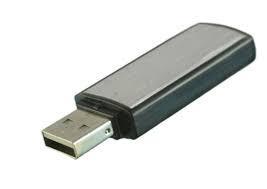
Flash storage is a form of solid-state storage, which means that it stores data using electricity in chips on a printed circuit board. The absence of moving parts reduces power consumption: “A typical SATA flash drive consumes 50 percent or less the power required by mechanical drives” (“Flash storage”, 2014, sec. 3), and quickens the process of data exchange, making it the most efficient portable data storage device to this day.
Conclusion
Overall, data storage evolution is one of many examples of how certain technological advances have been changing various aspects of our lives with every passing generation. The technology is still improving: every day, IT companies are working to find new ways to add more capacity to the common data storage devices and to increase their efficiency. There is a definite possibility that in a decade, a whole new method of data storage will be used all over the world.
References
Flash Storage. (2014). Web.
Jones, D. W. (2008). History of the punch card. Web.
Optical disc. (n.d.). In New World Encyclopedia. Web.
Computer History Museum. (2016). Timeline of computer history. Web.
The history of (computer) storage. (n.d.). Web.